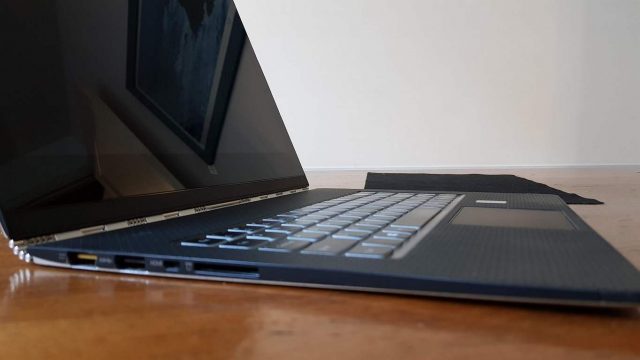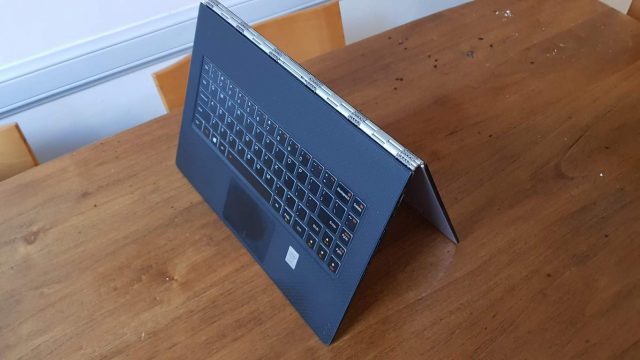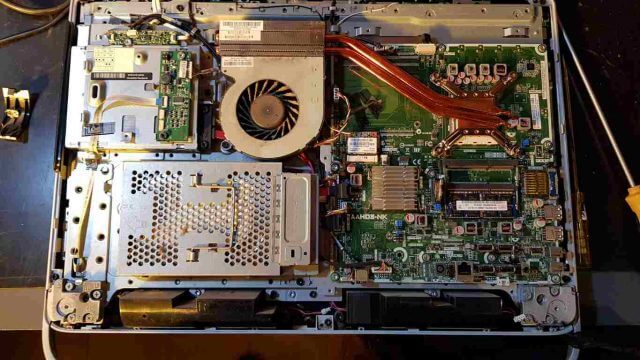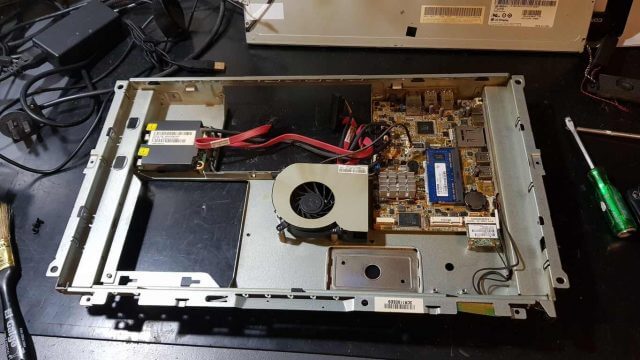My technician days have been decidedly quiet since March 20th because I can’t go into customers’ houses and vice versa. However, we have been able to pass laptops and other devices over the garden fence, which is precisely what we’ve been doing, but recently I’ve had some depressing results.
Lenovo Yoga 3 Pro Tablet
This four-year-old tablet, belonging to a family friend came in because it wouldn’t charge and showed no signs of life at all. I always get a hunch that things are not going to end well and this turned out to be the case with this tablet, which was in beautiful condition and well looked after, by the way. I know my limitations, so I took it to a laptop specialist who confirmed that the motherboard had blown, the charger was fine, but the cost of repair would be more than half of its current value– very disappointing.
On opening it up I discovered an M.2 SATA 256GB drive from which I needed to extract and back up all the customer’s data, but I didn’t have a spare M.2 slot in any of my PCs since it’s relatively new technology. It’s also important to note that M.2 drives come in two flavours– M.2 SATA and M.2 NVMe. An M.2 SATA drive won’t be recognised in many M.2 PCIe slots, for example. In the end, I invested in an M.2 SATA USB-C adaptor, plugged it into the customer’s replacement laptop, and restored her data at lightning speed.
This is the first time I’ve used an M.2 adaptor and I’m sure that the investment is well made since this certainly won’t be the last time I’ll need to back up an M.2 drive. The end result of this learning curve was that the customer bought herself a new laptop, I put the tablet, the charger and the M.2 drive up for sale and a couple of days ago, sold the tablet to someone aiming to fix it. I’m also tempted to buy the M.2 drive off my customer and use it as a handy pen drive.
HP TouchSmart 320 PC
I have a love-hate relationship with all-in-one (AIO) PCs because when they fail it’s usually very expensive and this one from one of my Speedy Moto customers was no exception. Like the Lenovo I just mentioned, there were no life-signs at all, not even the green LED would show when plugged in using the power brick– always a bad sign. Since these machines are large and very heavy, there seemed little point in lugging it around on the back of the bike, so I removed the motherboard and took it to another specialist so that he could check it for continuity, with the hope of finding a possible solution. At the same time I discovered that there isn’t one single replacement motherboard for this model to be had in Buenos Aires and a quick check on eBay revealed quite a few, but with COVID complications, not to mention Argentine customs, rampant corruption, and red tape, that purchase would prove difficult, if not impossible.
As of today, I’m waiting for a diagnosis from my electrical specialist, but I’m not hopeful and envisage having to also sell this machine for spare parts, just like the Lenovo. Delving into machines like this is an eye-opener and I particularly admire the design, which is very compact, with all the major components being easily accessible. Another very disappointing result, so far anyway.
HP Compaq CQ1 AIO
This particular all-in-one has been in my workshop several times over the last six or seven years and frankly, I was hoping never to see it again, not just because of the machine itself, but also because of the customer who is difficult to say the very least. A few years back I fixed the plastic power button which had mysteriously snapped and later reinstalled Windows 7, which in itself was a nightmare later because the customer also wanted me to set up her Hotmail account even though she couldn’t remember any of the usernames or passwords. Waving goodbye to the machine even then was bittersweet because I had a hunch it had boomerang tendencies. Long story short– the internal fan had failed, so it wouldn’t boot and after having replaced it with a new one, the LED screen failed, only giving an image intermittently.
On recounting the issue to the customer I advised her that the cost of a new screen, not to mention the new fan, would not be economically viable on a 10-year-old machine and that she’d probably be better off buying a new one. (There was always the possibility of the motherboard failing.) It was clear that the entire repair would be more than even the value of the machine as spare parts. But no, she insisted there was no problem with the screen and that I should repair it as is without buying new parts and by the way, could I please access her Hotmail account, then her bank account from my own computers because she didn’t have access, etc, etc, etc. For me, that is simply stepping over the line, so I returned the machine to her, managed to extract the cost of the new fan while leaving her to ruminate over how to proceed further. The problem I have with this situation is the customer denial that a physical problem exists, which implies a misdiagnosis on my part, and the risky business of accessing someone else’s private email and bank account without them being present. I would put both of those in the over and above the call of duty category, although I have done similar work with elderly customers, but always with them sitting at my side.
On reflection, I have an awful feeling that this machine may find its way back to me at some point in the very near future, by which time I may well have emigrated to distant shores.
—









I had one of HP AIO on my bench some while back, it too had mysteriously died.
I will try to join you tomorrow for the Heritage Oaks Community session from 2-4pm … never hurts to learn something new?